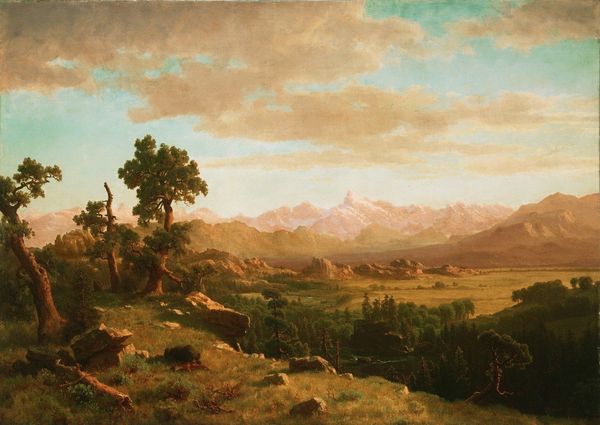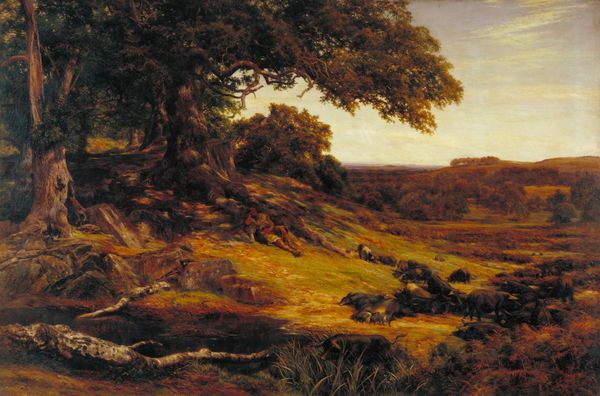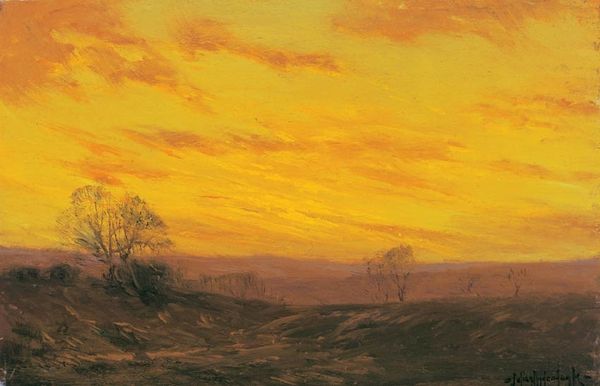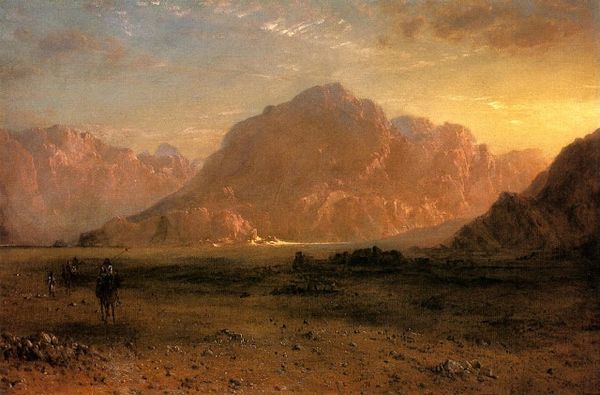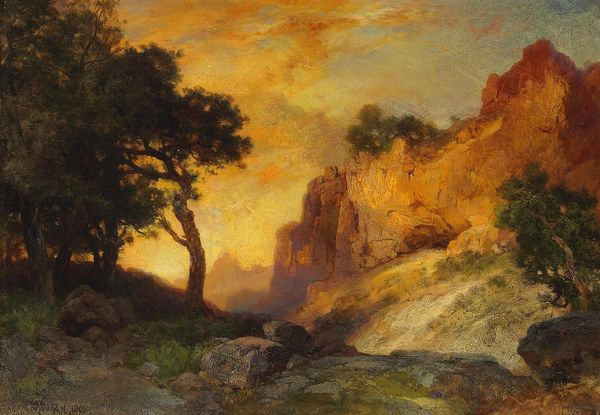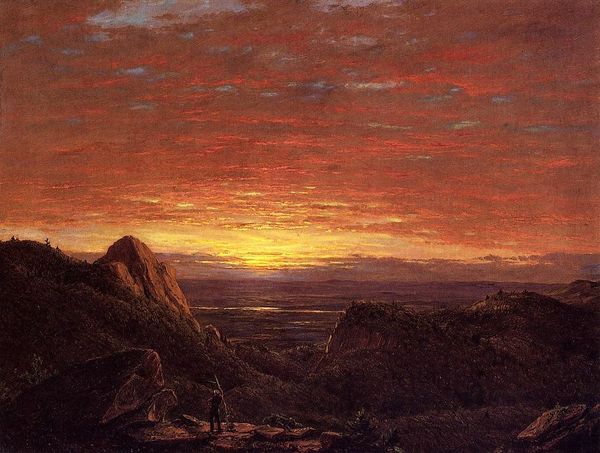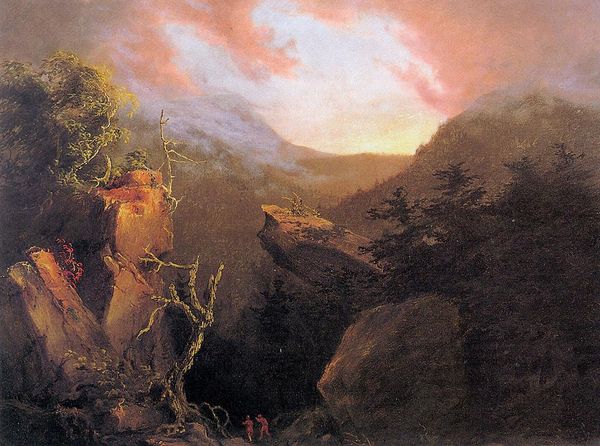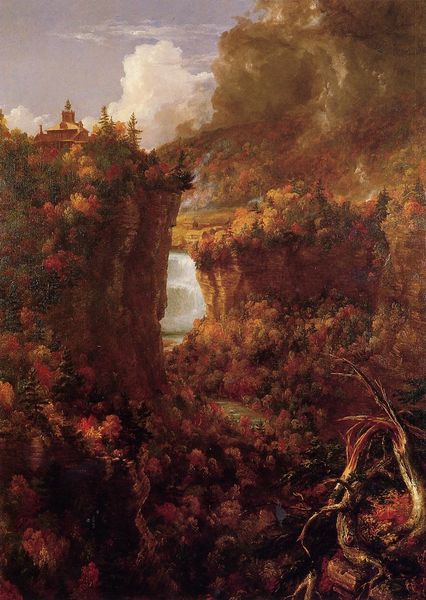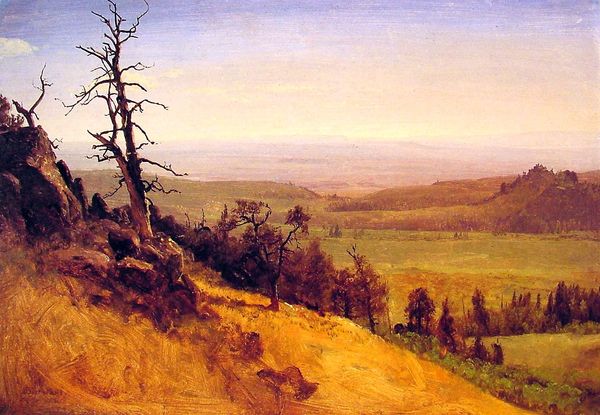
Copyright: Public domain
Curator: Albert Bierstadt’s "Wind River Country," painted around 1860, offers a stunning panorama rendered in oil on canvas. Its subject is the landscape of the American West. Editor: My first impression is the dominance of warm colors—the painting is almost entirely bathed in tones of orange and gold, giving it an intensely luminous, almost fiery feel. Curator: That’s a perceptive observation. The painting belongs to the Hudson River School, a movement known for its romantic portrayals of the American landscape, but it is also indicative of Manifest Destiny. Think about how that pervasive light might represent divine favor cast upon westward expansion. Editor: Interesting. Looking at it purely formally, the composition relies on a very clear foreground, middle ground, and background. The sharp definition allows Bierstadt to effectively render space. It also guides the viewer's eye. Curator: And if we consider who inhabited this "Wind River Country" at the time—Indigenous communities who faced displacement and violence due to this expansion—that idyllic landscape takes on a darker significance. The painting isn't just about natural beauty, it is about contested spaces and unequal power dynamics. Editor: Absolutely. From a structuralist perspective, the painting presents a binary: idealized nature versus the implied threat of human impact. But that reading doesn’t go far enough. Curator: Right, and so the historical context here becomes so important to consider. Whose narratives are silenced when we focus solely on the aesthetic appeal? What about those perspectives occluded by romantic visions? Editor: Bierstadt clearly manipulates light to create a specific atmosphere; you see it in the subtle gradations on the mountains. It encourages us to view the landscape in a certain light – literally and figuratively. I suppose my primary interest is to determine *how* that manipulation works through the image. Curator: For me, I'm always drawn to understanding *who* it serves, and at whose expense. This painting offers us a glimpse into how art can function as both a celebration and a complex negotiation of history, power, and representation. Editor: An approach like this makes revisiting the artwork necessary, prompting close-looking and contextual awareness in equal measure.
Comments
No comments
Be the first to comment and join the conversation on the ultimate creative platform.
